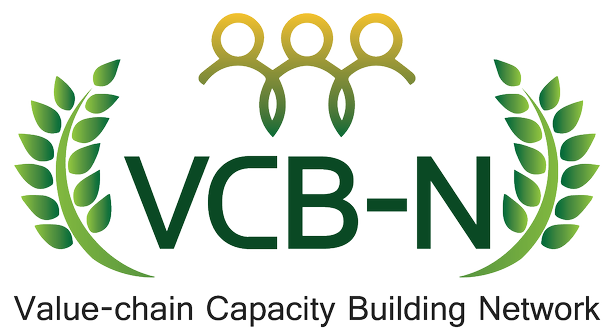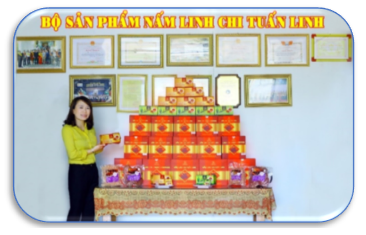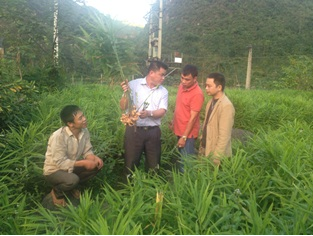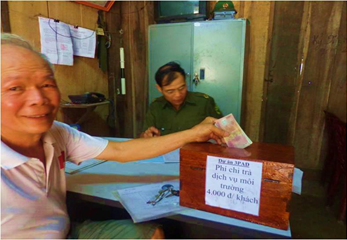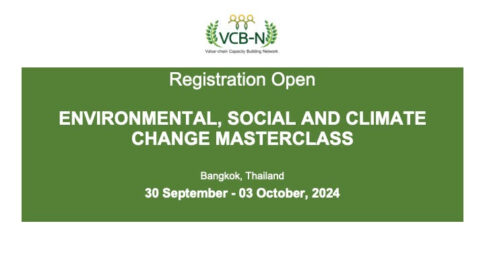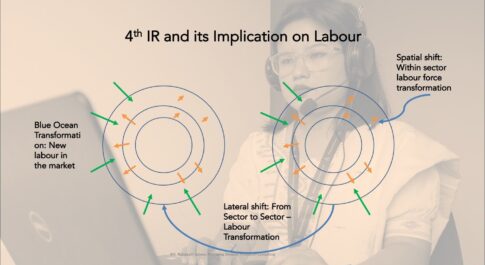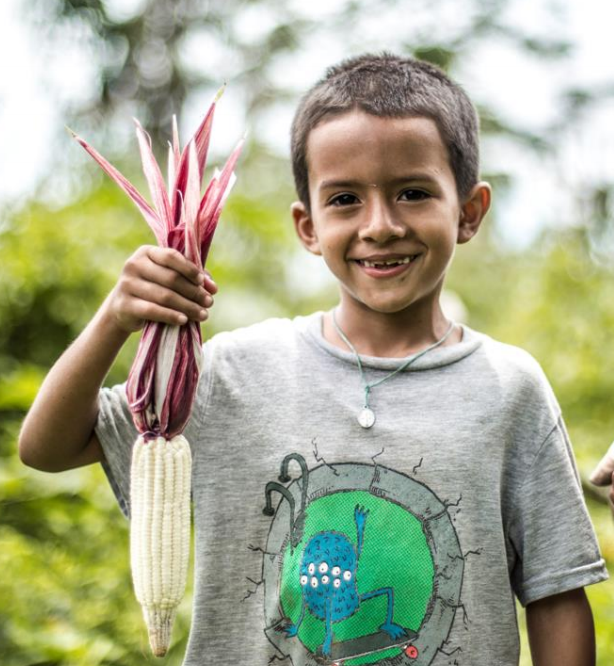
Good practice
A Holistic Approach to Poverty Reduction: Livelihood Improvement Group Mechanism
The following good practice is conducted by Cheattho Prak. The case study was selected and presented in Mekong Knowledge and Learning Fair (IFAD) by representative from Cambodia.
(For presentation in the event, please click here)

Background
Cambodia has made dramatic progress in reducing poverty over the last decade. From 2004 to 2012, more than 4.3 million people were said to have escaped poverty, mostly in rural areas. This is equivalent to having reduced the poverty level by more than two thirds, and the country also exceeded the MDG poverty target. The Livelihood Improvement Group and the Identification of Poor Household Program (ID-Poor) are among the holistic approaches that have been used in Cambodia for eradicating poverty. These approaches were introduced by IFAD in 2004.
Poor and vulnerable households in particular are characterized by a lack of productive resources including land, financing, technology and human resources. They lack social support networks and often have high dependency ratios (many children and old people compared to working-age adults). Furthermore, these households suffer seasonal food shortages and accumulate debt. Family illness or death causes almost half of losses the families experience, meanwhile even climate changes are becoming increasingly important. Many of the rural poor are landless or do not own enough land to be able to sustain themselves solely through farming.
IFAD aims to improve productivity, agriculture assortment, diversification of income generating activities, reduction of domestic violence, nutritional improvements and building up the social capital among the community all in order to help the rural poor households attain a better living.
The TSSD project in Cambodia was funded by IFAD and was executed by Ministry of Agriculture Forestry and Fisheries and Ministry of Interior. The ultimate goal of the project remains to offer a comprehensive solution aimed at reducing poverty levels in the country, through ID Poor & Livelihood Improvement Group Mechanism.
Innovations / Good Practices
The first step is to identify the poor. IFAD in collaboration with GIZ, introduced the Identification of Poor Households (ID-Poor) program under the Community Based Rural Development Project in 2004. It was later rebranded to become a national program in 2006 within the Ministry of Planning (http://www.idpoor.gov.kh). Under the ID-Poor program, the poor were grouped into two categories: ID Poor 1 (the most vulnerable poor) and ID Poor 2 (poor household). Both categories were included in the social safety net introduced by the government, in order to provide easy access to the public services such as education and health centers. These ID-Poor groups became the target of the IFAD supported project.
Once the households were identified, they then were further broken down into groups called “Livelihood Improvement Group” consisting of 15 – 30 members. In some areas and other groups were called “Improved Group Revolving Fund” which consisted of 50 members. Each group elected the leaders who were to be in charge of managing its daily operations. The group leaders included the leader, deputy leader and a bookkeeper. The project provides grants to the group called the “Group Revolving Fund” (GRF) to enable them to lend money to their members based on their own internal rule and regulation, interest rates and repayment schemes. Part of the interest and the savings from the Group Revolving Fund is used to support the group members in case of an emergency and also that the combined capital of the group is built up over the long run. At the same time, the group also received basic technical training such as gender mainstreaming and farming techniques. The fund from the GRF then was used as startup capital to try out the improved farming techniques.
The GRF and basic technical training received by the group, builds up the livelihood foundation for all their members. Then the Common Interest Groups (CIG) are formed for the applied training according to the field of interests for both on and off the farm activity. The CIG is composed of 70% from the LIG members and 30% non-members. One farm activity includes the single crop or integrated crop system through Farmer Field School approach. Off farm activity includes subjects such as handicraft, mushroom production, and mother-to-mother social marketing for nutrition.
Impact
As mentioned earlier, the focus of this beneficiary project is the poor households in the country, especially in rural areas. Currently, in Cambodia, the IFAD supported projects have created around 7000 groups similar to Livelihood Improvement Group, which is made up of approximately 200,000 poor households.
One of the beneficiaries of TSSD, Mme. Rath, Famer in Ksach Chanlear Commune, Kandal District, said: “Yes. Most of us, when we started our group revolving fund three years ago at least 80% of our 50 members were dirt poor[1]. You wouldn’t find us here if you came before the project; most of us emigrated for jobs. The village was quiet; you would find mainly older adults and children. Now, only five-member households remain poor.” When asked why the five-member households remained poor, and how they compare to the rest who rose out of poverty, she answered: “The five-member households are considered poor because each can’t afford to buy just a motorcycle. The rest are not poor anymore because each has a motorbike, some savings and at least a live cow bank. No need to migrate for job no longer.” The secret is the ‘domestic, yellow-and-long-footed chicken breeds – the broilers’. She said: “As we speak now, our live chickens fetch a price of at least 17,000.0 riels/kg (or $4.25/kg).” In comparison, the price of short-legged industry-bred broilers sell for about $2.0/kg.
Facilitating Factors / Challenges
There are many more households and under privileged people in Cambodia just like Mme. Rath that are benefiting from the Livelihood Improvement Program under the TSSD project. The livelihoods of the poor farmers have improved through the adoption of both basic and advanced farming practices, social empowerment combined with the access to start-up capital and agriculture inputs. People like Mme. Rath have since seen their livelihoods improve and can now earn a decent living. While there remains more work to be done with regards to eradicating poverty, the IFAD initiative has surely helped people like Mme. Rath and many other households in Cambodia.
Recommendations
Given to this success, the ADB and the Government have extended the project into second phase and scaled it up to more provinces. In addition, based on this experience, the Government has considered scaling up of the livelihood development approach into a national programme.
[1] ID poor 1 category
You may want to read
